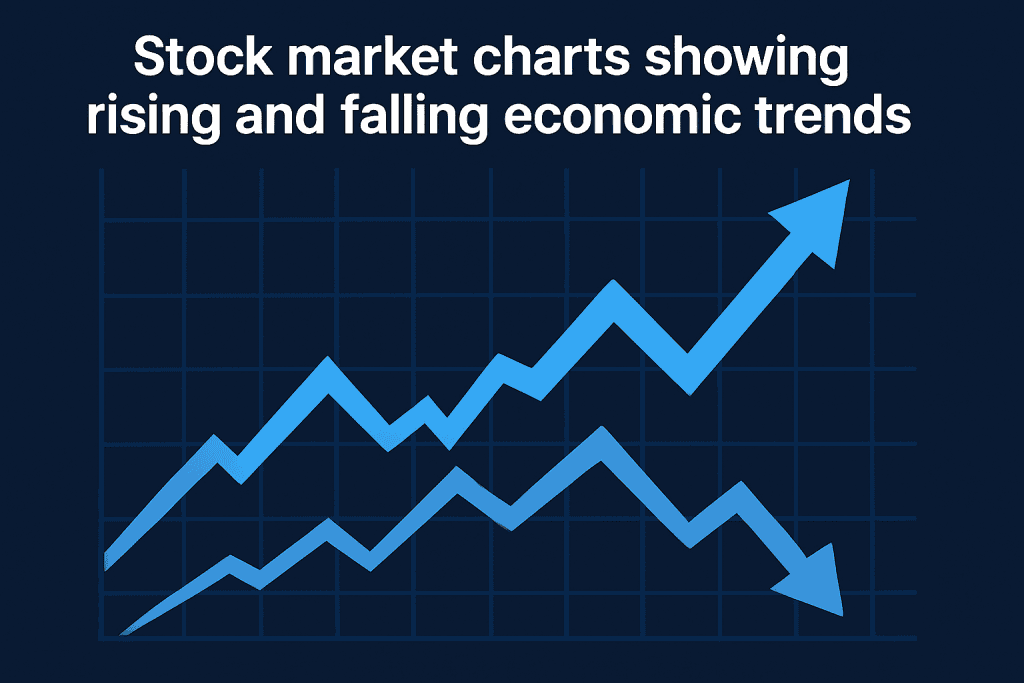
Economic indicators are essential tools for making informed investment decisions. Whether you’re a seasoned trader or a beginner, understanding these metrics can help you identify trends, predict market movements, and optimize your investment strategies. This guide explores key steps, tools, and techniques to evaluate economic indicators effectively. By mastering this skill, investors can gain insights into market trends, manage risks, and enhance portfolio performance.
Materials or Tools Needed
Alt Text: “Tools needed for analyzing economic indicators including data sources and software”
Below are the essential materials or prerequisites for evaluating economic indicators effectively:
| Materials/Tools | Purpose |
|---|---|
| Reliable Economic Data Sources | Access to updated and accurate economic data |
| Analytical Software (Excel, Python) | Perform calculations and visualize data trends |
| Economic Indicator Glossary | Reference for technical terms and definitions |
Step-by-Step Guide to Evaluate Economic Indicators

Step 1: Understand Different Types of Economic Indicators
Economic indicators are categorized into three main types: leading, lagging, and coincident. Leading indicators, such as the stock market, predict future economic activity. Lagging indicators, like unemployment rates, confirm trends after they occur. Coincident indicators, like GDP, move simultaneously with the economy. Familiarize yourself with these to understand their specific applications.
Step 2: Identify Relevant Indicators for Your Investment Goals
Not all indicators are equally useful for every investor. If you’re evaluating the stock market, focus on leading indicators like housing starts or manufacturing orders. For fixed-income investments, examine inflation rates or interest rate trends. Align your indicator analysis with your specific investment objectives.
Step 3: Source Reliable Data
Access economic data from reputable sources such as the Bureau of Labor Statistics, World Bank, or specialized financial platforms. Cross-reference data from multiple sources to ensure accuracy. Trustworthy information is critical for making sound decisions.
Step 4: Analyze Historical Trends
Plot data over a timeline to spot recurring patterns. Historical analysis helps you understand how indicators correlate with market behavior. For instance, study how the consumer confidence index aligns with retail stock performance during economic booms or downturns.
Step 5: Combine Indicators for Holistic Insights
Relying on a single indicator can be misleading. Combine multiple indicators to paint a comprehensive economic picture. For example, pairing unemployment rates with consumer spending data can provide insights into the health of the U.S. economy.
Step 6: Use Analytical Tools for Precision
Software like Excel, Tableau, or Python libraries can help process large datasets. Utilize these tools to create charts, calculate trends, and make data-driven predictions. Learning basic statistical techniques can significantly enhance your analysis.
Step 7: Regularly Update Your Analysis
The economy evolves rapidly, and outdated data can lead to poor decisions. Schedule regular updates to incorporate the latest figures. Staying current ensures your investment strategy adapts to changing conditions.
Do’s and Don’ts of Evaluating Economic Indicators
Do’s
- Use multiple indicators: Diversify your analysis to avoid reliance on one metric.
- Focus on relevance: Prioritize indicators aligned with your specific investment strategy.
- Track global trends: Economic conditions in major economies impact international markets.
Don’ts
- Ignore context: Indicators must be interpreted in the context of the broader economic environment.
- Overcomplicate analysis: Simplicity in analysis often leads to better decision-making.
- React impulsively: Economic indicators provide guidance, not guarantees. Avoid knee-jerk reactions based on single data points.
Common mistakes include focusing exclusively on lagging indicators, ignoring market sentiment, or failing to verify data accuracy. Correct these pitfalls to improve your evaluation outcomes.
FAQ
Why do economists study the data of economic indicators?
Economists study economic indicators to assess the health of the economy, predict future trends, and inform policy decisions.
How do leading economic indicators influence investment decisions?
Leading indicators, such as stock market performance or manufacturing activity, help investors anticipate market trends and adjust their portfolios accordingly.
What is the role of the Bureau of Labor Statistics in economic analysis?
The Bureau of Labor Statistics provides essential data, including unemployment rates, inflation, and labor productivity, which are crucial for evaluating economic performance.
Conclusion
Evaluating economic indicators is a vital skill for making informed investment decisions. By understanding different types of indicators, sourcing reliable data, and leveraging analytical tools, you can align your strategies with market trends. Remember to consider context, use multiple indicators, and regularly update your analysis. Mastering this process will enhance your ability to make profitable investment choices.
Resources
- Corporate Finance Institute. Economic Indicator.
- Investopedia. Economic Indicator.
- Quickonomics. Economic Indicator.
- SmartAsset. Indicator Definition.
- Wall Street Mojo. Economic Indicator.
